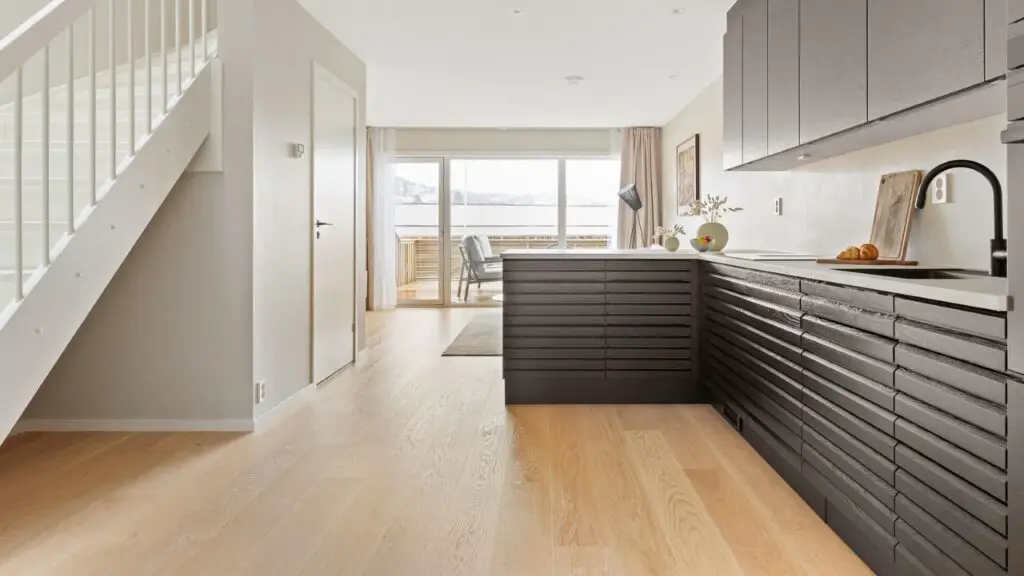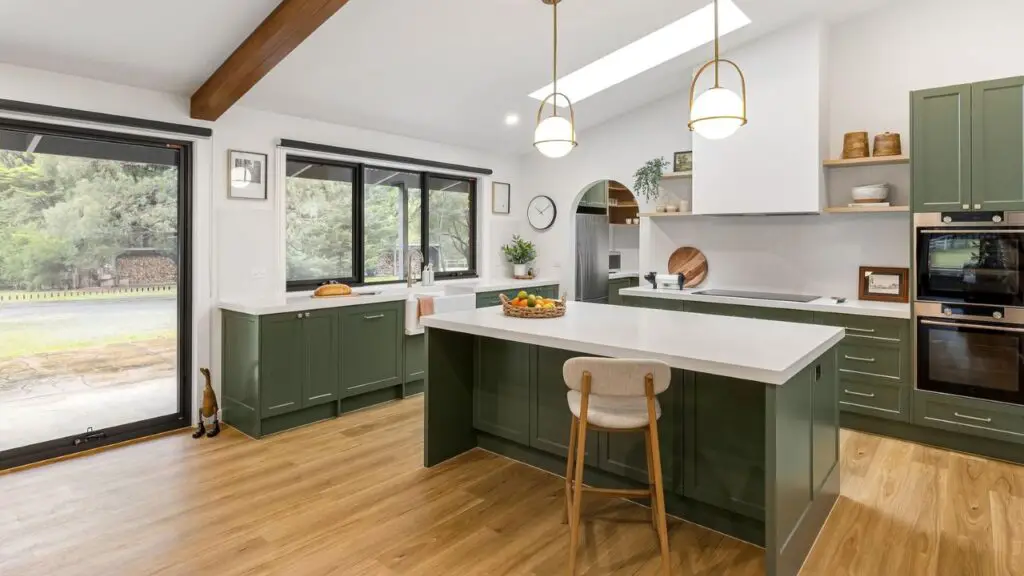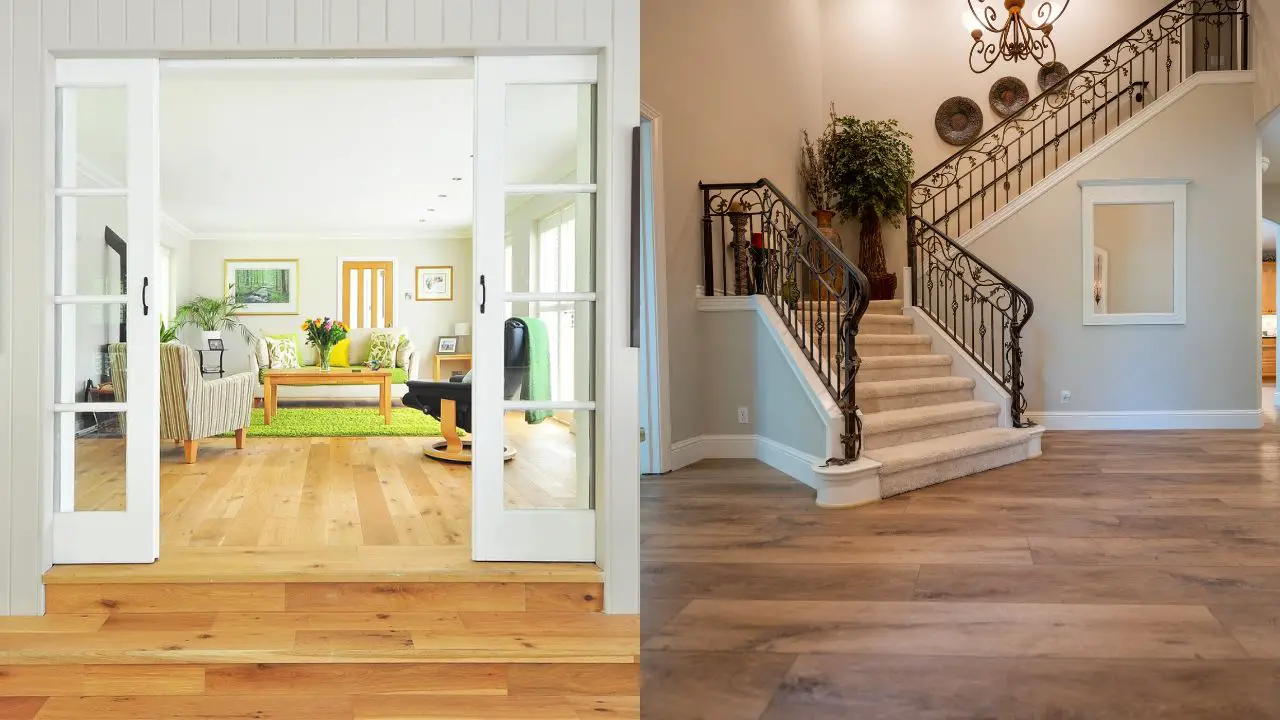When it comes to choosing the perfect flooring for your home, the decision can feel overwhelming. Two of the most popular and cost-effective choices on the market today are engineered wood flooring and vinyl. While both offer a wide range of styles and durability, they are fundamentally different in materials, performance, and appearance. So, how do you decide between engineered wood flooring vs vinyl? Let’s break down the details so you can make an informed decision that suits your lifestyle, budget, and aesthetic preferences.
What is Engineered Wood Flooring?

Engineered wood flooring is made from a top layer of real hardwood veneer, bonded over layers of high-quality plywood or fiberboard. This construction makes it more stable than solid hardwood, reducing the risk of warping due to humidity or temperature changes.
The top layer gives engineered wood its authentic hardwood look and feel. You’ll find it in a variety of finishes, species (like oak, maple, walnut), and textures. It’s typically more affordable than solid hardwood but offers the same elegance.
Key Benefits:
- Real wood appearance
- Can be refinished once or twice
- Better moisture resistance than solid hardwood
- Long-lasting (15–30 years)
What is Vinyl Flooring?

Vinyl flooring, especially luxury vinyl planks (LVP) or luxury vinyl tiles (LVT), is a synthetic flooring material made from PVC (polyvinyl chloride). Modern vinyl flooring is incredibly realistic, mimicking the look of wood, stone, or ceramic tile—without the high price tag.
It’s often completely waterproof, making it ideal for high-moisture areas like bathrooms, basements, and kitchens. Vinyl is also softer underfoot, low maintenance, and generally cheaper than wood flooring.
Key Benefits:
- 100% waterproof (LVP/LVT)
- Budget-friendly
- Easy DIY installation
- Resistant to scratches, stains, and dents
Engineered Wood vs Vinyl: Key Differences
Let’s look at how engineered wood and vinyl stack up in the most important categories:
| Feature | Engineered Wood | Vinyl (LVP/LVT) |
|---|---|---|
| Appearance | Natural wood | Realistic wood/stone look |
| Water Resistance | Moderate | Excellent (100% waterproof) |
| Durability | High (can dent/scratch) | Very high (scratch/dent resistant) |
| Installation | Moderate (nail, glue, float) | Easy (click-lock, glue-down) |
| Maintenance | Low to moderate | Very low |
| Refinishing | Yes (limited) | No |
| Cost | $$–$$$ | $–$$ |
| Eco-Friendliness | Depends on materials used | Less eco-friendly |
Durability and Longevity
If you’re looking for longevity, both options offer solid lifespans with proper care. Engineered wood can last up to 30 years, especially if you choose a high-quality product with a thick veneer. It can be sanded and refinished once or twice during its lifetime, which helps extend its life.
Vinyl flooring, while incredibly durable, cannot be refinished. However, it is resistant to most wear and tear including water, stains, and scratches—making it ideal for families with pets or children. High-end vinyl flooring can also last 15–20 years.
Winner for Durability: Vinyl, especially for high-traffic or wet areas.
Moisture Resistance
This is a big factor in choosing flooring for areas like bathrooms, kitchens, or basements. Engineered wood holds up better to moisture than solid hardwood, but it’s still made with a real wood top layer, which can warp or swell if exposed to excessive moisture.
Vinyl flooring, on the other hand, is entirely synthetic and often completely waterproof. Luxury vinyl planks and tiles are designed specifically for water-prone environments, making them a much safer bet for wet areas.
Winner for Moisture Resistance: Vinyl flooring.
Aesthetic Appeal and Realism
When it comes to authenticity, engineered wood takes the crown. You’re walking on a real wood surface, and it shows. It has unique grain patterns, warm tones, and natural texture that vinyl just can’t fully replicate—no matter how advanced the print layer is.
Vinyl has come a long way in recent years. High-definition printing and textured finishes make luxury vinyl options look stunningly close to real wood or stone. For most people, the difference is barely noticeable unless you look really closely or touch it.
Winner for Aesthetic Appeal: Engineered wood, for those who value authenticity.
Installation and DIY Friendliness
Vinyl is hands-down one of the easiest flooring types to install. Many vinyl planks come with a click-lock mechanism, allowing you to install them as a floating floor without glue or nails. It’s a popular choice for DIYers because of this.
Engineered wood installation is a bit more complex. While some engineered wood options also come with click-lock features, many require nails, staples, or glue. Professional installation may be the better route for this type of flooring.
Winner for Ease of Installation: Vinyl flooring.
Maintenance and Cleaning
Both options are easier to maintain than solid hardwood, but vinyl wins in the low-maintenance department. You don’t need special cleaners or treatments—just regular sweeping and occasional mopping.
Engineered wood needs a little more attention. Avoid excess water when cleaning, and use wood-friendly products to keep the surface in good condition. Scratches and dents may also require touch-ups.
Winner for Low Maintenance: Vinyl flooring.
Environmental Impact
If eco-friendliness is important to you, engineered wood is typically the better option. Since it uses a real wood veneer, it comes from renewable resources. Some manufacturers even offer sustainably sourced wood and low-VOC finishes.
Vinyl flooring, being plastic-based, is less eco-friendly and harder to recycle. However, some brands are working on greener, phthalate-free options.
Winner for Sustainability: Engineered wood flooring.
Cost Comparison
Vinyl is the clear winner for affordability. On average, it costs less per square foot than engineered wood and has lower installation costs. For budget-conscious renovators, vinyl provides a high-end look without the high-end price tag.
Engineered wood is more expensive but adds real value to your home, especially if you’re looking for resale appeal.
Winner for Budget: Vinyl flooring.
Which Flooring is Best for You?
Choosing between engineered wood flooring vs vinyl ultimately depends on your priorities:
- Choose engineered wood if you love the authentic look and feel of real wood and don’t mind spending a little more.
- Choose vinyl if you need something waterproof, durable, and budget-friendly.
For most families with kids and pets, vinyl is a smart, stress-free choice. But for those designing a luxurious or timeless space, engineered wood might be worth the investment.
Conclusion
Both engineered wood and vinyl flooring offer excellent options depending on your lifestyle, design goals, and budget. While engineered wood gives you the beauty of natural hardwood with added stability, vinyl provides unmatched durability, ease of maintenance, and moisture resistance—perfect for busy households.
Weigh the pros and cons carefully and think about your home’s needs. Whichever you choose, both flooring types can transform your space beautifully for years to come.
FAQs
1. Is engineered wood more durable than vinyl?
Not necessarily. Engineered wood is strong and can be refinished, but vinyl is more resistant to daily wear and tear, especially in wet or high-traffic areas.
2. Can vinyl flooring look like real wood?
Yes! Luxury vinyl planks are designed to mimic the look of real hardwood, and some even come with textured surfaces for added realism.
3. Is engineered wood flooring waterproof?
It’s water-resistant, not waterproof. It performs better than solid hardwood in moisture, but too much water exposure can still cause damage.
4. Can you install vinyl flooring over existing floors?
Absolutely. Vinyl is thin and flexible, making it suitable for installation over many types of existing flooring.
5. Which flooring adds more value to a home?
Engineered wood generally adds more resale value due to its real wood content and luxurious appearance.

